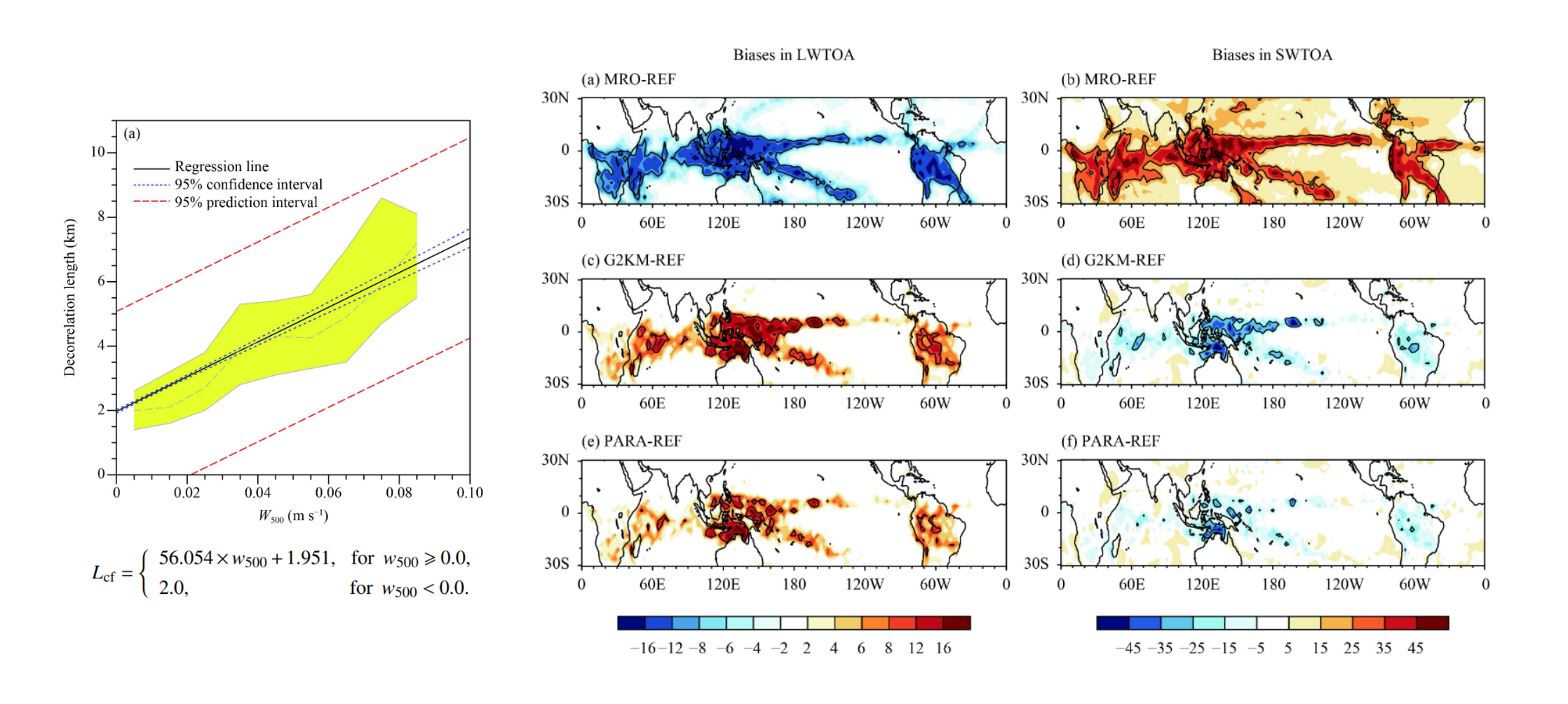Physical parameterization of Cloud vertical overlap
Climate models usually have grid sizes much larger than a single cloud body, leaving cloud shape unresolved and having to be parameterized. The latter matters for both precipitation and radiation calculations, both of which depend on how clouds overlap verticallyand spread horizontally. It is natural to think that cloud shape is connected to the weather status in which the cloud is embedded. However, this connection is largely ignored in climate models. Our study linked cloud overlap to the strength of atmospheric convection in the tropics based on simulations of a global cloud-resolving model (NICAM), with a linear regression approach. This simple and dynamic-related representation of cloud overlap leads to a significant improvement in simulation of both cloud cover and radiation fields compared with traditional overlap treatments. This study provided a physically justifiable approach to parameterize cloud overlap in the tropics in GCMs. 
